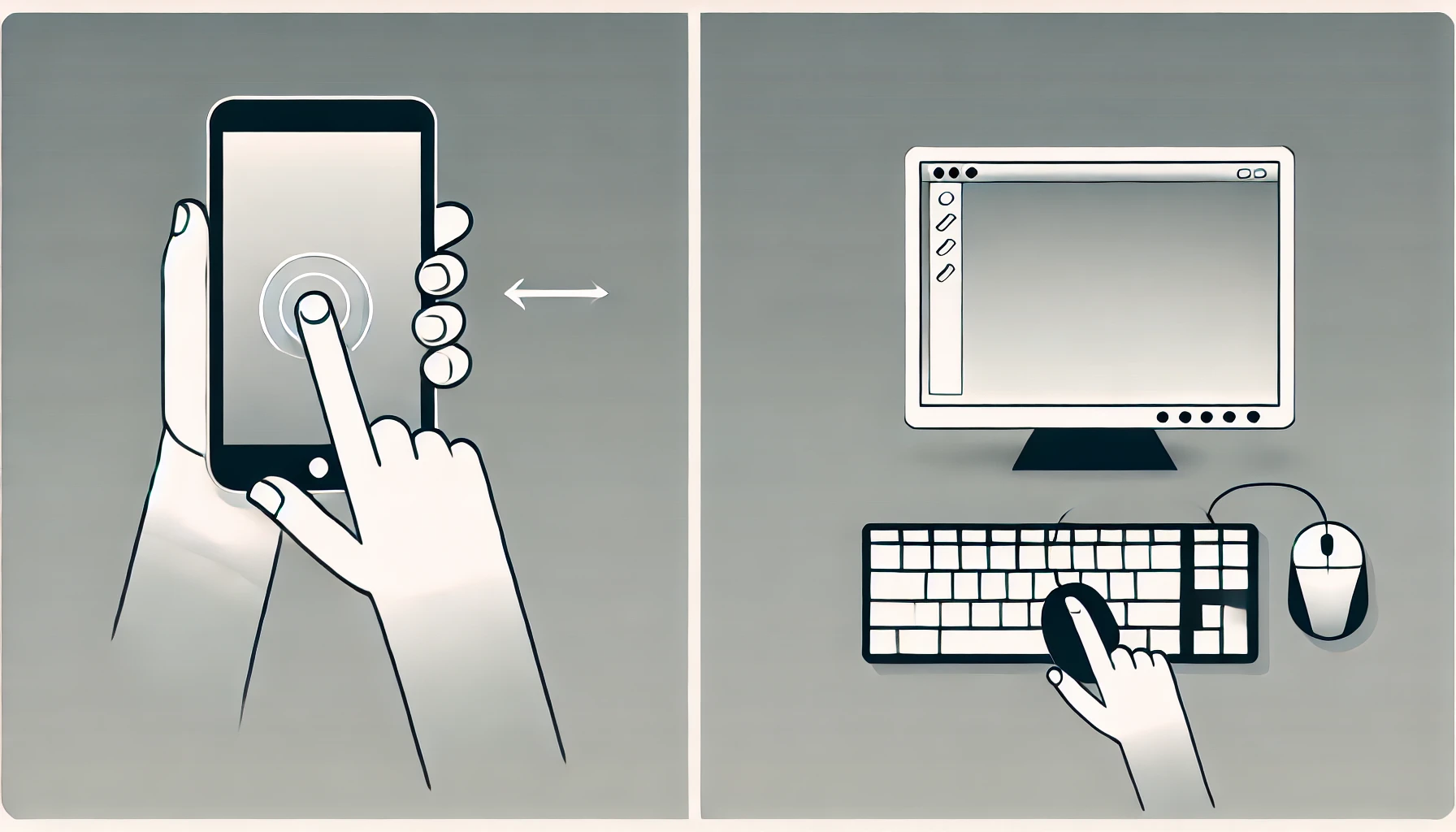The advent of mobile devices hasn't just changed how we interact with our phones and tablets; it's fundamentally altered how we use technology across the board—including traditional computers with keyboards. This shift is more profound than most people realize, affecting user behavior, interface design, and even the way we think about computing.
From Command Lines to Touchscreens: A Brief History
In the early days of computing, command-line interfaces dominated. Users needed to know specific commands and syntax to operate computers effectively. The introduction of graphical user interfaces (GUIs) changed the game by allowing users to interact with visual icons and menus, reducing the need for memorizing everything the computer can do.
The rise of mobile devices took this a step further. Touchscreens and small form factor eliminated the physical keyboard and mouse, relying instead on touch gestures and on-screen keyboards. This design choice was driven by the need for portability and the limitations of small screens.
Keyboard Interaction’s Disappearing
Mobile devices have virtually stripped us of the keyboard. Think about it—on your phone, typing is cumbersome (unless you're one of those super-typers). As a result, mobile interfaces prioritize tapping and swiping over typing. The only times we really use the keyboard are for brief tasks like messaging or searching.
Even studies have shown that mobile users prefer navigation through touch rather than typing. According to a report by Statista, over 90% of mobile time is spent on apps designed for touch interaction.
The Impact on Computer Use
This shift in user behavior isn't confined to mobile devices. When primarily mobile users sit down at a computer, they often carry over their touch-first (and even touch-only) habits. They rely heavily on the mouse or touchpad, rarely using keyboard shortcuts or commands. Selecting text with the keyboard? Forget about it—they're dragging the cursor just like they would on a touchscreen.
Different Generations, Different Habits (but not because the age)
Age isn't the factor, there is a real reason. Those of us who started using technology before the smartphone era had no choice but to learn keyboard-centric skills. We navigated command lines, memorized shortcuts, and became adept at typing. Younger users, whose first devices were phones or tablets, didn't have that same experience. They've learned to interact with technology primarily through touch and visual navigation.
Educational institutions also have noted this shift, with many schools integrating touch-based devices into the curriculum. This change affects how students learn to interact with technology from an early age.
Computers and Phones: More Similar Than You Think
At first glance, computers and phones seem like entirely different beasts. But in reality, people use them for the very same purposes: entertainment, communication, learning, shopping, and even business. The difference lies in the interface and input methods. That way, if a primarily phone-user sits down to a computer, it’s only natural to use what they know to achieve the same thing as they would on the phone.
Why Does This Matter?
Understanding these behavioral shifts is crucial, especially for those of us developing software and user experiences. Recognizing that a significant portion of users navigates technology differently informs how we design interfaces and interactions.
User experience (UX) design has increasingly prioritized simplicity and touch-friendly interfaces, even on desktop platforms. Windows and macOS have both integrated features that cater to touch and gesture-based navigation.
We have Adapted to the Change
Recognizing this shift, I decided to focus on catering to both user groups—the traditional keyboard warriors and the touch-reliant navigators. By providing experiences that are accessible and efficient for both, we can create software that feels intuitive to everyone.
At LINK-V, we're developing updates to our platform, Grace, that bridge this gap. We start with a foundation that both groups can use effectively, then branch out with enhancements tailored to each group's preferences.
Understand What it is - Don’t Hate Different Styles
If you are 30/35+, you may have tendencies to complaint about “the young are…”. That’s not helpful, won’t change anything but most importantly - it’s just not that.
People use technology differently mostly based on what they had available when growing up. You may say it’s lazy to just tap on the screen without knowing exactly a shortcut. Is a keyboard shortcut for navigation faster? Totally is! If you don’t know the shortcut, do you know where to find the thing or do it differently? Very often not. But those used to tapping are way more able to find it. They are also much better in adopting new options in software and apps.
If you take pride in remembering - good for you. I love my shortcuts. And I recognize I need to take my laptop everywhere, because I am far from efficient on my phone - and I have a darn large screen.
Conclusion
Mobile devices have done more than introduce new gadgets into our lives; they've fundamentally changed how we interact with all forms of technology. By understanding these shifts in user behavior, we can create better, more inclusive experiences that cater to everyone's needs.

